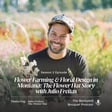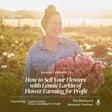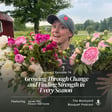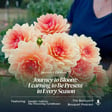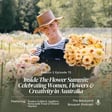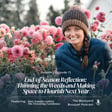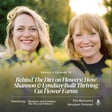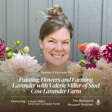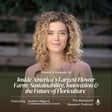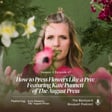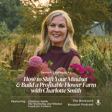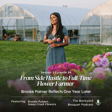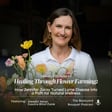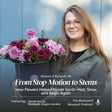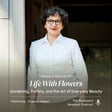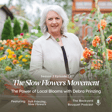
Growing Pansies for Cut Flowers with Brenna Estrada of Three Brothers Blooms
Can pansies be a cut flower? 🌸 You might be surprised! In this episode of The Backyard Bouquet Podcast, we’re chatting with Brenna Estrada, author of Pansies and the flower farmer behind Three Brothers Blooms. Brenna is on a mission to bring long-stemmed pansies back into the floral world, and she’s sharing everything you need to know about growing them successfully.
From the history of pansies as a cut flower to tips on growing them for bouquets, Brenna reveals why these delicate blooms deserve a place in every gardener’s cutting garden. Plus, we discuss the best pansy varieties for long stems, how to get vibrant colors, and why this flower has been overlooked for decades.
🌿 In This Episode, You'll Learn:
✔️ Why pansies were once a popular cut flower (and how they can be again!)
✔️ The best pansy varieties for cutting and arranging
✔️ How to grow pansies for long stems and vibrant colors
✔️ Tips for overwintering pansies and extending bloom time
✔️ The secrets behind hybridizing pansies and preserving rare varieties
📖 Get Brenna’s book, Pansies, here: https://bookshop.org/a/2182/9781643264004
Follow Brenna & Three Brothers Blooms:
- Instagram: https://www.instagram.com/threebrothersblooms/
- Website: https://threebrothersblooms.com/
Check out Epic Gardening for high-quality gardening tools, raised beds, and expert resources to help you grow a thriving flower garden! Plus, you can save an extra 5% on your order when you use my code THEFLOWERINGFARMHOUSE at checkout!
🔗 Shop Epic Gardening here: https://shop.epicgardening.com/THEFLOWERINGFARMHOUSE
“Nature does not hurry, yet everything is accomplished” -Lao Tzu
👉 Listen now & subscribe to The Backyard Bouquet Podcast for more flower-growing tips, expert interviews, and behind-the-scenes stories from the world of flower farming!
Show Notes: https://thefloweringfarmhouse.com/2025/03/11/ep-50-growing-pansies-for-cut-flowers/
